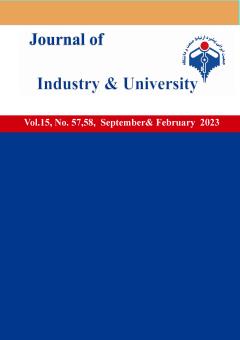Designing a Model of Internal Relations in the Insurance Industry Using Interpretive Structural Modeling (ISM)
Subject Areas : General
pegah Madah Rudsari
1
![]() ,
Davood Kiakojouri
2
,
Davood Kiakojouri
2
![]() ,
Mehran Mokhtari Bayekolaei
3
,
Mehran Mokhtari Bayekolaei
3
![]()
1 - PhD student in public administration majoring in organizational behavior; Chalous Branch, Islamic Azad University, Chalous, Iran
2 - Associate Professor of Public Administration Department; Chalous Branch, Islamic Azad University, Chalous, Iran
3 - Associate Professor of Public Administration Department; Chalous Branch, Islamic Azad University, Chalous, Iran
Keywords: Structural Capital, Human Capital, Relational Capital, Insurance Industry,
Abstract :
Intellectual capital is a combination of intangible assets, human assets and infrastructures that enable the organization to perform its tasks. Structural, human, and relational capitals are the components of intellectual capital, which are a combination of intangible assets, human assets, and infrastructures that enable the organization to perform its duties. Based on this, the main goal of the current research is to design internal relationships between structural, human and relational capitals in the insurance industry using Interpretive Structural Modeling (ISM). The method in this research is quantitative (descriptive-survey) and by using the snowball method, 15 experts in the field of public administration and organizational behavior who were effective in the field of intellectual capital and social capital and also had management experience in the insurance industry as The statistical sample of the research was selected and the internal relationships between the research components were identified by the Interpretive Structural Modeling (ISM) method
The findings of the research showed that the dimension of human capital (including communication skills, work experience and tacit knowledge of people) as the basis of the model affects all other dimensions and is located at the bottom level, which is the basis of intellectual capital and an essential element. It is considered in the implementation of its duties. At the middle level of the dimension of relational capital (including trust and honesty, informal participation, political participation, social participation, economic participation) and at the last level is structural capital (including communication and network links and network capitals), which two other dimensions have an effect on it. As a result, the structural, human and relational capitals are a set of knowledge, information, intellectual assets, experience, competition and learning of the organization, which managers, paying attention to this factor, can be a suitable platform for promoting capitals. Provide an idea in the organization.
